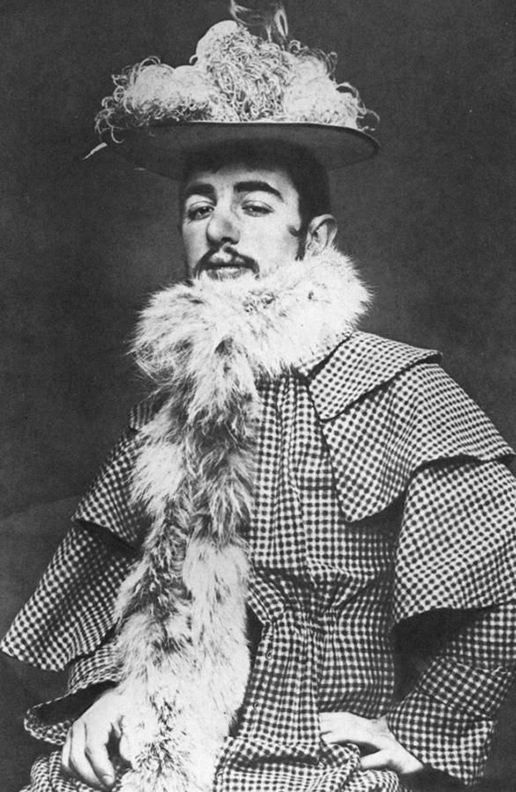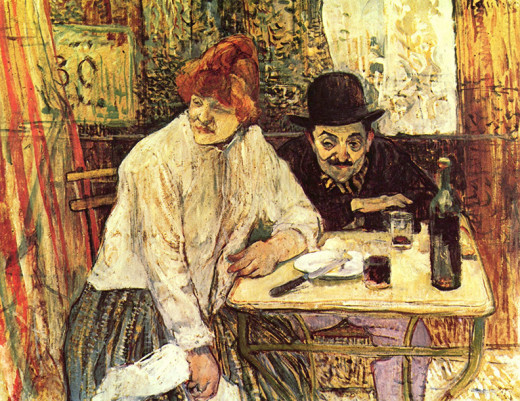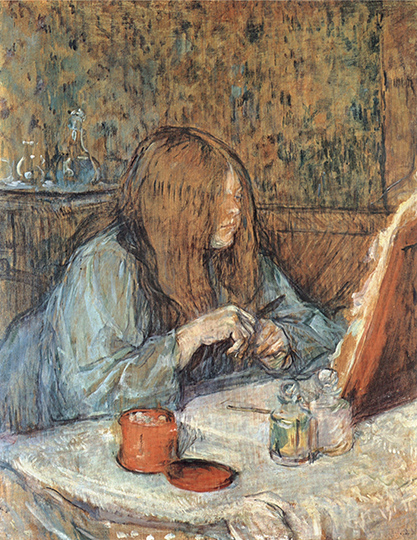Artists Who Died Before 40: Henri De Toulouse-Lautrec

Henri de Toulouse-Lautrec (1864-1901)
It’s so sad when anyone dies young, but doubly so for artists, because there is so much more they could have done to make the world a more beautiful, colorful place. The sad fact is that artists feel deeply, all the highs and all the lows of life. Sometimes I envy people like my mother, who have a very “even keel.” People like that seldom get mad or upset (although when they do, look out). However, they also don’t get overly jovial or jocular. Every day is a straight line from sunrise to sunset.
Gratefully, I don’t live like that. I am one of the artists. When I am happy, I am a very ecstatic, giggling fool. And when I’m sad, I am in the dismal dumps. No halfway for me. I feel it all and it often shows up in my work.
That’s what happened to most of these artists who died young. They felt too deeply the pain of life. And some just succumbed to sickness, sadness, and drug addiction before their work was done. This is the story of one who fell into alcohol addiction but first made us all fall in love with the cabaret: Henri de Toulouse-Lautrec (1864-1901)


An Aristocrat
Born into an aristocratic family in the south of France, he was adored by his parents and lived in the lap of luxury until an accident made evident a rare genetic bone disease that caused his legs to stop growing. He fell and broke his left leg at the age of 12, but it did not heal for a very long time. Then at 14 he fell again and broke the right leg. During these long stretches of time when he was immobilized, his mother, Countess Adelle, brought him art supplies so that he could amuse himself somewhat. He became fascinated with doing little caricatures of the servants, his dogs, and horses. Later the doctors told his mother that he should never run, play, ride horses or anything else that may cause him to break his legs again. The movies depict him as a dwarf but that is not correct. He was simply short.
Do you care for poster art?
Count Alphonse
His father, Count Alphonse, was an unpredictable eccentric known to ride off to a hunt in outlandish costumes and even to disappear for long periods of time. This explains somewhat Henri’s love of costumes as well. Many photos of Henri de Toulouse-Lautrec are of him in clown costumes and acting out. It has given him a mystic in later years that he may have been a little insane. Yet most artists are a little insane. We would have to be to dedicate our lives to art; a pursuit that we know will never make us much money or prestige until after we are dead. Who else but an artist would put up with that?

No More Riding Or Hunting
When his son could no longer accompany him on hunts and rides, the Count stayed away more and more. When Henri continued to grow normally, except for his legs, the Count became ashamed of him. At maturity, Henri measured only 4 ½ feet tall. After he began publishing art, the Count insisted that he not use his real name on the art. The Count didn’t want to be associated with him by name or anything else. But even with a pseudonym, people knew it was Lautrec so Henri finally gave up trying to protect his father.

Art in Paris
There was nothing left for him to do but pursue sedentary pursuits of sketching and drawing, so his mother sent him to study art in Paris. Countess Adelle had heard about the drinking and carousing that goes on with artists and especially in Paris, so she set him up with a doctor roommate and two apartments: one for him to live in and one for his studio. Oh, mothers, they try but they can’t keep us from bad things, can they? After he graduated from the Cormon’s studio, he gave himself over to the complete experience of the bohemian lifestyle, drinking and carousing, sketching, of course, in all the cabarets, racetracks, and brothels.

Constant Pain
His legs may have healed but he suffered constant pain in them till his death. Not only that but he was laughed and scorned and ridiculed for his height, or lack of it, all his life. He drowned his sorrows and his pain in alcohol. Art and alcohol became his only mistresses to which he devoted all his energy and time. His devoted mother would come to Paris occasionally and take him away on holiday to the baths in Italy where he had some relief from the pain, but he always returned to Paris and the continued mistress of art, along with scorn.

Moulin Rouge
One of his many haunts was the cabaret of Moulin Rouge. It didn’t take long for the owners of the cabarets to see that sitting at his little table and constantly sketching the dancers, Lautrec attracted almost as much of an audience as the dancers did. So he was given a reserved nightly table near the front where he could sketch and draw attention. He eventually was asked to create some advertising posters for the cabaret and he was happy to have the work.

Harsh And Stark Style
Henri was not “kind” in his art. The way he painted and sketched elongated noses and rolls of fat, saggy jowls and bags under the eyes of women is sort of sad. Most artists are told to favor women especially if they are paying you and take off 10 years and 10 pounds. But Henri wasn’t kind to them; most had not been kind to him. His stark and harsh style became part of his charm. People actually liked this “tell it like it is” style and heralded him all the more for it.

Advertising Art
Remember the year is the 1890s. There was no radio yet, no TV, cable or cell phones. If a business wanted to advertise, they were stuck with direct advertising with posters on the walls in alleys or buying space in the newspapers. The problem with newspapers is that they were mostly discriminating against the debauchery of the cabaret dancers, and so posters and word of mouth were all that was available. The first few posters created by Lautrec were so different in their flat areas of color and design that people actually stole them off the walls to take home. At first, the cabaret owners were upset but soon realized that having the posters stolen was also good advertising, and so they ordered more made.


Dancers Long Remembered
The posters featured the latest dancers at the cabarets. One was Louise Weber, nicknamed La Goulue, the glutton. She was so nicknamed because people couldn’t figure out how she could eat so much and stay in those small waisted outfits. In her dance she could kick so high she could kick off the hats of the men in the front row. But La Goulue only lasted a couple of years… because you see you CAN’T eat that much and keep a small waist for long. Next came Jane Avril. In her dance she also kicked very high but then would turn around and throw up her skirts and there on her underwear, she had embroidered a small red heart… shocking. And the crowd when wild. Jane only lasted a couple of years when she developed a social disease and was replaced. Next was a couple who called themselves Les Skellette, the skeletons. They were so nicknamed because they were double-jointed and could spin their arms and legs around as if they were not connected to the joint… and the crowd went wild. So it went for the many dancers at the Moulin Rouge. They would have all been lost to obscurity…. Except there was an artist in the front row sketching and immortalizing them in posters. He captured the spirit and emotion of an era that is now gone but not forgotten.

Alcoholism
The alcoholism soon got the best of Henri and he couldn’t maintain this lifestyle for long. His artist friends tried to get him to quit but never fully succeeded. The doctors told him that if he continued to drink he would die. His friends, therefore, stayed by him day and night to keep him from alcohol. Later after his death, they found that his special walking cane with the brass handle was hollow and there was alcohol hidden inside. He had been sneaking drinks with his friends right there.
At the end, his rarely seen father, Count Alphonse came. Everyone was astonished except Henri who merely said, “Good Papa. I knew you wouldn’t miss the kill.” His father was acting stranger than ever, in his grief, and was flicking noisy flies with the use of Henri’s shoelaces. His last words were addressed to his father: “Old fool.” He was only 36 when he died.

Joie de vivre, Joy of Life
In that short number of years, he captured the joie de vivre of the Paris nightlife and part of history that was very short-lived but iconic nonetheless. The cabarets were only hugely popular because many people believed that the world would end at the turn of the century (much like people did in 2000). From just before 1890 to just after the turn of the century people wanted to enjoy life as much as could be and visited the cabarets faithfully. But when the world did not end the cabaret life fell away and the all closed. If it had not been for our faithful artist in the front row capturing it all, we would not have much of a record of it ever having happened aside from a footnote in history.

Generous to Fellow Artists
Henri de Toulouse-Lautrec was also a generous man. Not really having to work for a living, he had extra cash to slip into the pockets of the struggling fellow artists on the streets of Paris. More than once he and Mary Cassatte slipped money to Van Gogh who would most certainly have starved. I understand he even took that money and ran out to buy more paints instead of a sandwich. Artists are more in love with the mistress of art than our own stomachs sometimes.

Happenstance and Catalysts
I appreciate the stories and struggles that artists have to endure to make the mark in history that some of them have made. Many times it is just a matter of being in the right place at the right time. I know that it seems like artists who are not very talented or who show no more talent than some others who did not achieve fame did, however, it is a lot of chance, happenstance and who you know more than talent most of the time. In Lautrec's case, it was the happenstance of breaking his leg that redirected his life toward art. I imagine without that catalyst, he would have happily followed his father hunting and riding the countryside with little thought of art.









